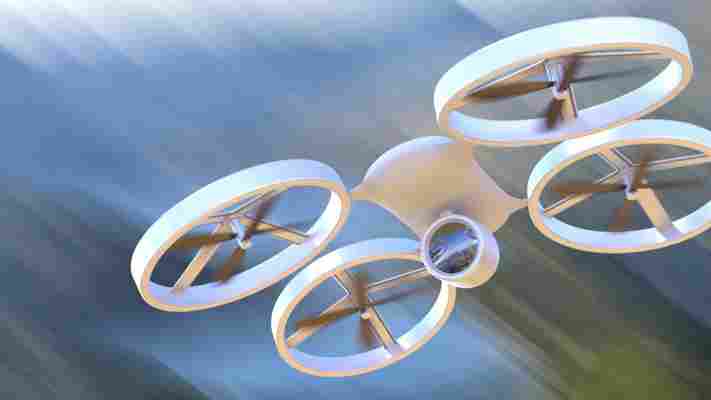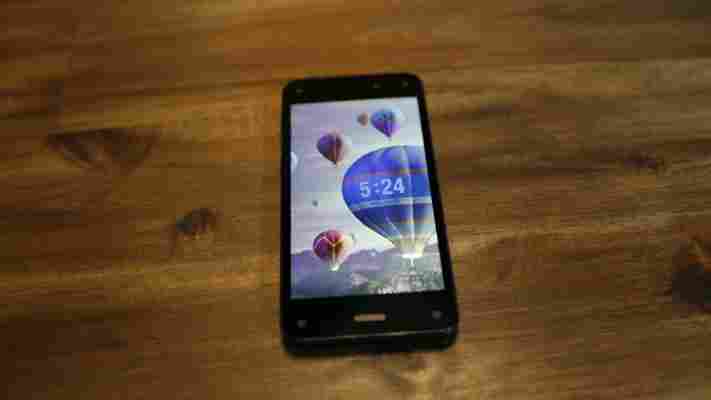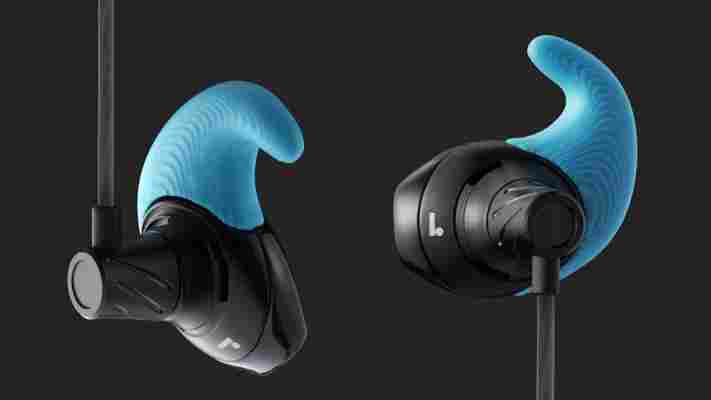Brought to you by TNW Deals , your source for deals on drones , e-learning and tech gear .

Drones aren’t just being used to fight wars and help businesses rake in millions. They’re also be used to make the world a better place.
Here are a few examples of how this is being done.
Natural disasters and wars call for emergency distribution of medicine and aid, and drones make this more efficient. Aviation company Matternet is developing a network to transport medication to risk areas.
The network is sold to aid organisations as a service, providing them with access to drones, charging stations and secure communication systems. Essentially, they’re getting everything they need to transport aid and other vital resources swiftly and with ease.
Late last year, the network was put to the test during a serious tuberculosis epidemic in Papua New Guinea. Doctors were able to use the service to transport patient samples to faraway laboratories in a matter of no time.
A Dutch graduate has put the world’s emergency services to shame, coming up with a system that would see drones being used to drop defibrillators off to heart attack victims. The concept would supposedly work with a medic placing the equipment onto a drone and setting it to fly to the victim, whereby another medic would administer aid.
Currently, the prototype ambulance drone sports six propellers, which are divided across three arms. They enable it to fly at speeds up to 60 miles per hour, making emerging response times much faster.
Its creator, Alec Momont, reckons it could be used to respond to medical emergencies within a minute. At present, response times are at around ten minutes.
The world’s changing weather means activities in rural settings are becoming increasingly dangerous. And far too often, it takes a rescue team a good while to get to the victim. What’s good, though, is that the virtual eyes and ears of the drone can be put to the test to be able to direct a team to bring the victim to safety.
Texas-based search and rescue organisation EquuSearch is already using infrared-equipped drones to help in its missions, which can be used to fly directly overhead suspected locations and to pick up a mission person’s body heat. Beforehand, it had to receive permission from the Federal Aviation Administration.
Another useful thing we can do with drones is help protect Earth’s wildlife by monitoring it from afar, especially with endangered species. This has already been put to the test by a team of Indonesian scientists , who have used drones to spy on a group of endangered apes, ensuring they are living well and are accessing the correct vegetation.
They’re also being used to protect wildlife by wiping out activities such as poaching. Last year, OI Pejeta Conservancy, a 90,000-acre reserve Rhino reserve based in Kenya, teamed up with San Francisco-based tech company Airwave to provide its rangers with a drone system. It consists of an HD-capable drone connected up to two laptops, which is used to watch out for unwanted activity and to fend off poachers.
Next page: Assisting with disasters and more…
When a devastating natural disaster strikes, lives, homes and businesses can be lost. But drones have already been put to the test to assist with these sort of incidents , with the earthquake in Haiti being a great example. The US Government used drones to look for survivors and transport medication, protecting its troops from any danger.
Professor Nick Jennings, a chief scientific advisor to the UK Government, has been working on a project called Orchid and sees the potential of this area. The project’s aim is to see drones – or UAVs – working with emerging services teams right across the UK, to combat the worst of disasters. Testing has already started and could see British emergency services streamlined and changed for the better in the next few years.
To make crime investigations easier, forces across the world are starting to use drones to investigate potential leads and threats. Perhaps this is concerning in terms of privacy, but it does make sense.
However, implementing drones on a wider scale is an expensive affair. This has led to many smaller police departments in the US using domestic drones, with special permission from the Federal Aviation Association. Such drones can cost as little as $100 but still come with the ability to take photos and video footage.
Oil is a crucial resource, vital to the survival of many economies and mankind in general. Getting hold of it in the first place is generally dangerous, but drones are already being used to make sure oil rigs are in tip-top condition and functioning as they ought to.
Defense solutions company Auronautics, based in Israel, is just one example. It regularly uses drones to monitor offshore oil fields and if they are in good working order. Any issues with them can be picked up with the drones’ built-in cameras. Inevitably, this replaces human labour having to do such a risky job.
Caring for the precious areas of our planet’s oceans has become a major task for mankind. At the end of the day, we have a duty to make sure sea life flourishes into the future.
Henri, a waterproof drone , makes this task easier and safer. Weighing only 5 pounds, it comes equipped with a high-definition GoPro camera and a GPS-enabled autopilot chip, perfect for mapping and navigating the sea.
Image credits: 1000 Words / Shutterstockom, Aeronautics, Wikimedia Commons
Hands-on with Amazon’s Fire phone, the newest portal into its ecosystem
During today’s launch event , Amazon CEO Jeff Bezos told the audience that the media was constantly asking him when his company would build its own phone. I’ve been in briefings with Bezos and yes, this line of questioning has actually happened. Today, he answered that question.

The Fire phone is a such a part of the Amazon ecosystem that it has a hardware button to help you add items to your cart. Even AT&T CEO Ralph de la Vega joked that he had to keep the phone away from his family so they wouldn’t purchase items with the Fire and OneClick purchasing.
After today’s event, I had a chance to try out the One Click in your pocket at Amazons campus in Seattle: It’s a nice phone, but right now, unless you’re a hard-core Amazon fan, you should wait until full review of the device can be conducted before you place that pre-order.
The teaser video for the phone featured people amazed by the 3D display. Called Dynamic Perspective, in real world use it’s actually great in some instances, a gimmick in others. When asked about the battery hit, an Amazon spokesperson told me the feature won’t drain the battery any quicker than normal use. Amazon has released the Dynamic Perspective SDK to developers so there’s virtually no limitation to what can be done with the four front-facing cameras. As a home screen, it’s gimmicky like Apple’s Parallax lock screens are gimmicky. Cool when you want to show off a new phone, but that initial reaction fades.
As for the tilting features of Dynamic Perspective in the UI, they’re actually pretty slick. This is where the feature can really come into its own for customers. It’s really what sets the phone apart from the rest of the pack and other companies out there will probably offer their own version of the feature soon.
The phone features a 4.7-inch IPS HD Gorilla Glass display. One of the two features Bezos touted on stage was it’s 590 nits of brightness and circular polarizer. The phone is supposed to be viewable in landscape and portrait mode even while wearing polarized glasses. A quick test with a pair of sunglasses showed that the feature worked as advertised. The brightness level was higher than that of an iPhone, which should help when viewing the phone in bright sunlight. As for clarity, the phone’s display isn’t anything to crow about.
Based on the Flow feature found in the Amazon shopping app, Firefly is baked directly into the phone’s hardware with a dedicated button that double as a camera button. Push and hold the button to launch the feature and point the phone at products, phone numbers, bar codes, paintings, QR codes, URLs and posters. All of the items are placed in a queue and you can decide what you want to do with them. The app works quickly and as well as Flow during a demo. As for the upper limit of scanning items for a queue, Amazon told me they would get back to me about it.
This feature is the ultimate showrooming utility. In a store you can quickly determine if you can get a better deal from the online retailer. And because it’s being opened up to third-party via the Firefly SDK, expect an influx of business recognition apps.
Amazon has been bullish when it comes to making sure its tablets produce quality audio. The inclusion of Dolby Digital in the Fire phone indicates that the company doesn’t see the smaller form factor as an excuse to phone it in (ha, get it? Phone…). The sound coming from the Fire is better than average. The sounds are deeper, but it’s still a phone so don’t expect deep bass hits.
The push for better audio is because the Amazon experience depends on it. If the music or video you’re streaming sounds sub-par, it diminishes the Amazon experience. A good experience makes for happy customers that might just buy their next camera from you.
The customer support feature that puts a little helper right inside your phone. The customer service rep is placed in a tiny window and can control your phone and draw on items to help you learn how to control your phone. It’s exactly like the Kindle Fire experience. Well, except smaller.
This is what the phone is all about. The entire experience is built around using Amazon for everything and buying all your things from the company. Amazon isn’t coy about this. In fact, it’s very upfront about its hardware play to get you to buy everything from its store. To that end, the company gives anyone that buys a Fire a year of Prime for free. If you plan on buying the Fire phone, chances are you’re already a Prime member. So this effectively cuts $100 off the $199 (32GB) and $299 (64GB) price tags. Amazon is also offering free unlimited storage on Amazon Cloud Drive for your photos. But, with Flickr already offering 1TB of storage for photos, access to the Amazon Cloud Drive seems nice, but not worth switching smartphone ecosystems.
And that’s what Amazon is offering. A smartphone entrance to a robust ecosystem. Instant Video includes X-ray for access to IMDB data about movies and TV shows, plus the same caching technology found in the Fire TV. Last week, the company introduced Amazon Music streaming for Prime members and, of course, there’s the Kindle library that’s second to none in the e-book world. All of this and the store are intricate parts of the phone – all roads to the Buy Now button and if you’re cool with that, the Fire is worth considering. Maybe.
The actual phone itself is about the same size as a Samsung Galaxy S5. The rubber edges are a nice tactile touch. The phone has LTE and the current flavors of Wi-Fi. It also has NFC, but lacks Bluetooth LE. According to an Amazon representative, BLE is coming, but could not offer a timetable. So don’t expect your wearables to work with the new phone until some undetermined amount of time.
That’s one of the issues that rears its head when your products are built on top of Android. In order to take advantage of features like BLE support, Amazon has to update its forked version of the Google mobile operating system. This forking also kills inclusion of some of the best apps in the Google ecosystem. Namely Google apps like Maps, Google Music, and Google Now. The Fire does have Nokia Here maps, but anyone that uses Android or even iOS will be disappointed to see their favorite mapping app missing. Having these apps missing from a tablet is unfortunate, on a smartphone, it’s a huge gaping hole.
Once we have time to truly test the phone, we’ll have a better idea of how it compares to the rest of the market and if being wired directly into the Amazon ecosystem at all times is a good thing.
Normal’s $199 3D-printed earphones are custom-built based on photos you take of your own ears
Hardware startup Normal today launched (US-only) its line of custom 3D-printed earphones that you order using an app to take photos of your ear.

Finding a comfortable pair of one-size-fits-all earphones is a difficult task. Headphones tend to be more forgiving since they’re not actually inside of you, but earphones that stay in when exercising without also giving you a headache are another thing altogether.
To pre-order a set of Normal earphones, you’ll need to download the firm’s iOS or Android app, as there’s currently no Web shop. The app will help you take a series of photos as you turn your head to the side in order to get a clear picture of your ear.
You’ll then choose custom details like color and then fill in payment and shipping details. Normal will also laser engrave your carrying case with a name of your choosing. The first orders are expected to start shipping within weeks with an eventual turnaround time of 48 hours once launch demand has been filled.
Normal will 3D-print the part that goes into your ear and then assemble it with the rest of the earphone components. The $199 price tag includes New York tax and shipping.
I haven’t heard how the earphones sound yet, but Kaufman reassured that the company has used the highest quality components it could find. I did get a chance to handle a prototype fitted for someone else, and the hardware has a nice feel to it.
Normal was founded Nikki Kaufman, one of Quirky’s founding members. The firm raised a $5 million seed round from several VCs and angel investors.
Kaufman said in an interview that she never thought she would leave Quirky until she realized that Normal was an idea that she “really had to go out and do.” After having poor experiences with off-the-shelf earphones, Kaufman looked into getting a pair of custom in-ear monitors made, but they were prohibitively expensive.
In all likelihood, Normal won’t be competing directly with professional-grade monitors. Instead, the startup will go up against the likes of Etymotic , which offers a Custom Fit ear mold service for roughly $100. The real test will be whether Normal’s sound quality is able to match Etymotic’s entry-level MC5 line .
When I first heard that Normal uses photos instead of a mold, I was very skeptical. Can smartphone cameras really provide fine enough resolution to 3D print a part that can compete with a physical impression?
Normal, at least, stands by the quality of its product. If you’re not happy with the fit, the startup is willing to redo the earpiece. There’s also a return flow built into the app in case you want to send it back.
Normal may sound like a non-descript name for a startup, but it’s meant to dispel the notion that anyone has “weird ears.” In Kaufman’s mind, everyone’s ear holes are both completely normal and completely unique.
Pre-ordering a set of Normal earphones on launch day is a bit of an unknown, as you’ll have to take the startup’s own word about the fit and audio quality of the product. However, something tells me that Normal is going to sound as good as it looks.
➤ Normal
